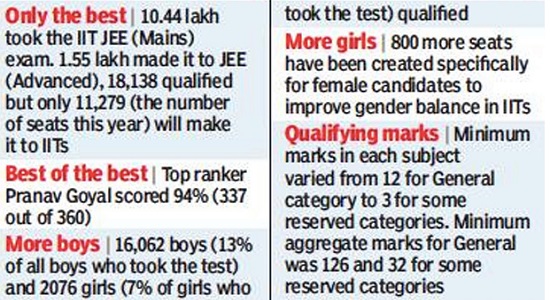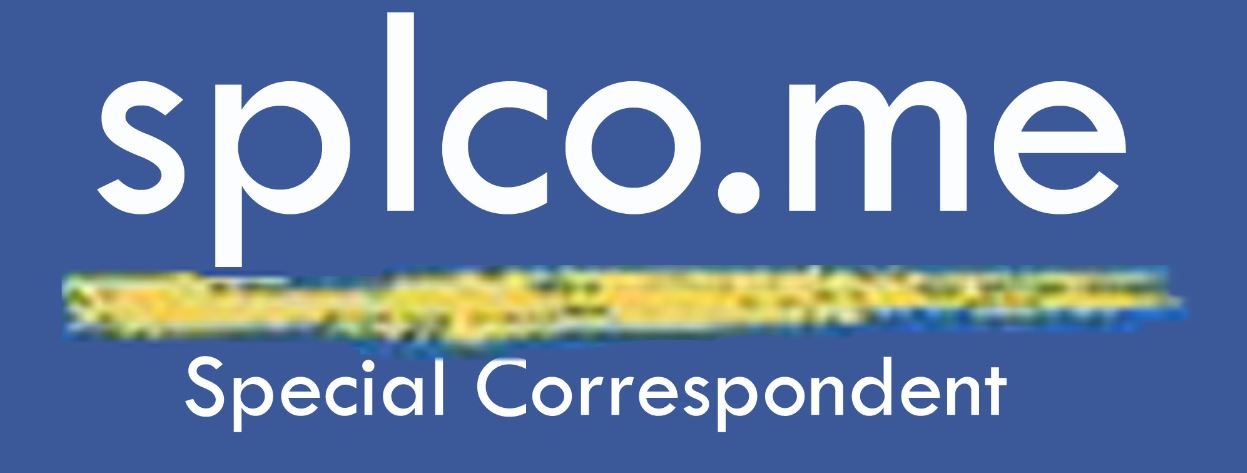The drop in the number of qualified candidates from 50,455 last year to 18,138 by maintaining last exam’s qualifying score has raised doubts whether there are enough students to fill all the seats at the premier Indian Institutes of Technology.

Pranav Goyal from Panchkula district of Haryana topped the exam scoring 337/360. Five of the top ten ranks have been secured by candidates from Kota, with the coaching capital reinforcing its position as the mecca for preparation for the JEE Advanced.
And for a first in JEE (A), two candidates from the physically challenged category have made it to the elite club: Lay Jain (AIR 9) and Neel Gupta (AIR 10).
“This is a happy and surprising situation where the two boys have overcome so many odds to make it to the top of the ranks card,” said M L Sharma, JEE (A) chairman from IIT Roorkee.
Asked about the fall in number of students making the cut, he said that as the minimum qualifying scores were already pre-defined, the IITs found that fewer candidates had scored 10% in each subject and 35% in aggregate.
“We have qualified 1.6 times the number of candidates to the seats available in all the IITs,” said professor Shalabh S, JEE Advanced chairman from IIT Kanpur, the organising school for the entrance exam. The IITs have 11,279 seats in all.

A lot of students who don’t get the top ranks or seats in courses of their choice drop out, so education experts have expressed apprehensions about filling all the seats in IITs this year.
The minimum subject-wise score is 12 for open category with an aggregate of 126 and merely 8,664 candidates made the cut as compared to 23,390 last year. It’s the same story in OBC-non creamy layer, SC and ST categories.
For the candidates to qualify for the admission in the IITs/NITs/IIITs and such other CFTIs whose admissions are based on the JEE (Advanced)/JEE(Main) ranks, they should have secured at least 75% marks in the 12th class examination, or be in the top 20 percentile in the 12th class examination conducted by the respective Boards. For SC/ST students the qualifying marks would be 65% in the 12th class examination.
The JEE Main exams can be sat for for three consecutive years but candidates can sit for the JEE Advanced exams for only two consecutive years. The syllabus of the two exams also differs. The JEE Main exams is on the same lines of the CBSE Class 11 and 12 Physics, Chemistry and Math syllabi. The JEE Advanced requires a few extra topics to be covered for the exam. The two exams also differ since to be able to answer the JEE Advanced questions, the candidates must have in-depth knowledge of the concepts and their applications. Speed and accuracy is focused on in JEE Advanced exams whereas in JEE Mains exams only speed is focused on.
JEE Main is for those candidates who wish to get into BE or B.Tech courses in the National Institutes of Technology (NITs), Indian Institutes of Information Technology (IIITs), other Centrally Funded Technical Institutes (CFTIs) and engineering colleges of the participating states. The JEE Main is also the eligibility test that allows students to give the JEE Advanced exam which eventually leads to admission in either the IITs or the Indian School of Mines (ISM).















